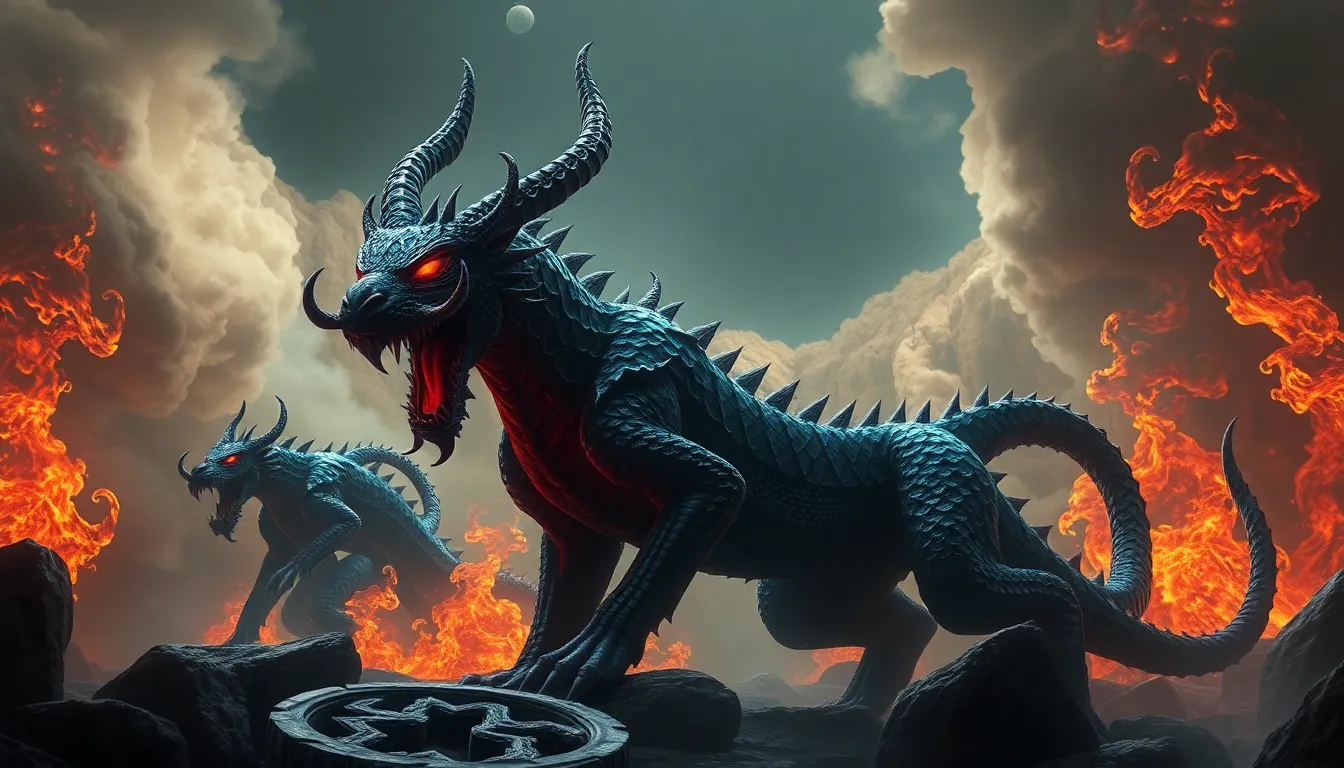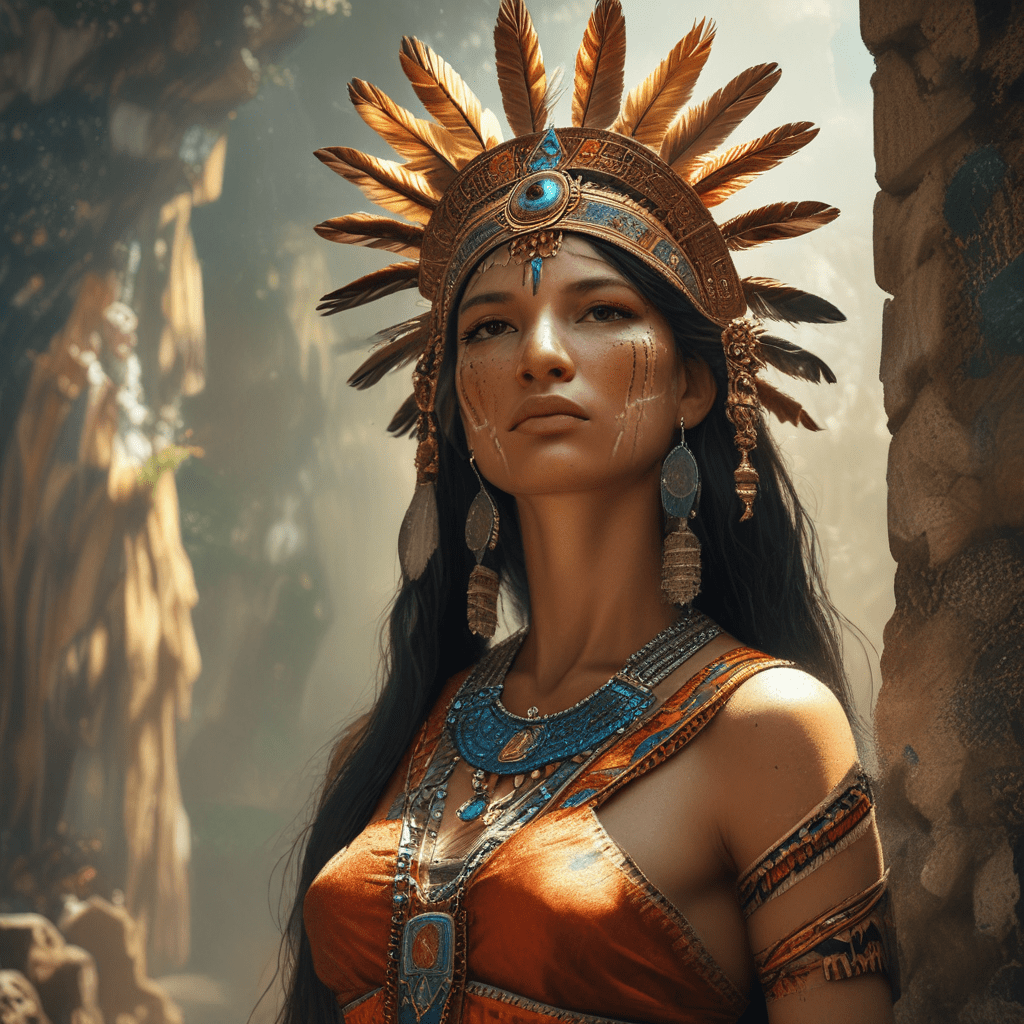The Tale of the Manticore: A Beast of Many Horrors
I. Introduction to the Manticore
The manticore, a mythical creature that has haunted the imaginations of many throughout history, is a fascinating blend of terror and intrigue. Defined as a beast with the body of a lion, the head of a human, and the tail of a scorpion, the manticore embodies the concept of a hybrid creature, which serves as a symbol for various cultural fears and mysteries.
Throughout mythology, the manticore has been depicted in various ways, serving as a reminder of the dangers that lurk beyond the human experience. From ancient texts to modern interpretations, the manticore’s legacy endures, making it a significant figure in folklore and literature. This article aims to explore the manticore’s symbolism, its origins, and its lasting impact on both historical and contemporary culture.
II. Origins of the Manticore Myth
The origins of the manticore myth can be traced back to ancient Persia, where the word “manticore” is derived from the Persian term “martikhoras,” meaning “man-eater.” This etymology hints at the creature’s fearsome nature and its role in the folklore of the time.
Over the centuries, the image of the manticore evolved as it was incorporated into various cultures, including Greek and Roman mythology. The creature became a part of storytelling traditions, where oral narratives helped shape its identity and characteristics, often exaggerating its features and abilities to enhance the sense of danger it represented.
III. Physical Description of the Manticore
The manticore is renowned for its striking and grotesque appearance. Its iconic features include:
- Lion’s body: Symbolizing strength and power.
- Human head: Representing intelligence and cunning.
- Scorpion tail: A reminder of danger and lethal threats.
Descriptions of the manticore vary significantly across cultures. Some tales portray it with wings, while others emphasize its ability to shoot poisonous spines. The variations serve to enhance the creature’s fearsome reputation, often reflecting the cultural values and fears of the societies that told these stories.
The grotesque appearance of the manticore often symbolizes the chaotic and unpredictable nature of human existence, representing the monstrous aspects of life that people fear but cannot ignore.
IV. The Manticore in Ancient Literature
The manticore has been referenced in various ancient texts, particularly within Persian literature. Greek mythology also features the creature, showcasing its adaptability across different cultural narratives. In medieval bestiaries, the manticore was often included alongside other mythical creatures, such as the griffin and chimera, highlighting its status as a creature of interest and fear.
When compared to other hybrids, the manticore’s unique combination of features sets it apart, offering a different perspective on the interplay between humanity and the monstrous.
V. The Manticore’s Role in Folklore and Legend
Tales of encounters with the manticore often depict it as a formidable adversary, challenging heroes and adventurers. These stories serve multiple purposes:
- They act as cautionary tales, warning against hubris and the dangers of the unknown.
- They highlight the importance of bravery and intellect in overcoming fearsome obstacles.
- They create a sense of wonder and terror that captivates audiences.
The manticore’s presence in folklore emphasizes the moral lessons that can be learned from facing one’s fears and the unknown, making it a valuable figure in storytelling traditions.
VI. Symbolism and Psychological Interpretations
In psychological terms, the manticore can be seen as a representation of fear and horror, embodying the darker aspects of the human psyche. It serves as a metaphor for inner demons and struggles, illustrating how fear can take on monstrous forms when left unchecked.
Through this lens, the manticore becomes a symbol of the challenges individuals face in confronting their fears, emphasizing the importance of understanding and integrating these aspects of the self.
VII. The Manticore in Modern Pop Culture
In contemporary culture, the manticore continues to appear in various forms of media, including literature, films, and video games. Its adaptability allows for reinterpretations that resonate with modern audiences. Notable appearances include:
- Fantasy novels that explore magical realms.
- Films featuring mythical creatures and epic battles.
- Video games where players encounter the manticore as a formidable foe.
The lasting impact of the manticore in modern imagination highlights its significance as a creature that embodies both fear and fascination, ensuring its place in our cultural narratives.
VIII. Artistic Representations of the Manticore
The manticore has been depicted in various artistic forms, from classical paintings to modern sculptures. These representations often emphasize its grotesque features, serving to evoke a sense of awe and terror. The symbolism in visual art can vary, portraying the manticore as:
- A fearsome predator lurking in the shadows.
- A complex being that challenges the boundaries of nature.
Moreover, the manticore’s image has been utilized in popular culture merchandising, serving as a visual representation of adventure and the unknown.
IX. The Manticore and its Place in Fantasy Worlds
In the realm of fantasy, the manticore plays a vital role in tabletop games and role-playing scenarios. Its presence in these worlds adds an element of tension and conflict, challenging players to confront their fears. Additionally, the manticore features prominently in fantasy literature, where it serves as:
- A guardian of ancient secrets.
- A formidable enemy that tests the hero’s resolve.
The appeal of the manticore in fantasy settings lies in its ability to create an atmosphere of danger and excitement, enriching the narrative experience.
X. Conclusion: The Enduring Legacy of the Manticore
The manticore, a creature of many horrors, has left an indelible mark on the cultural landscape throughout history. Its origins in ancient Persia and evolution through various mythologies showcase its adaptability and relevance across time. The manticore serves as a powerful symbol of fear, danger, and the unknown, resonating with audiences both in the past and the present.
As we continue to explore the realms of storytelling and imagination, the manticore remains a testament to the complexities of human experience, representing the struggles we face in confronting our inner demons and the mysteries of the world around us.




